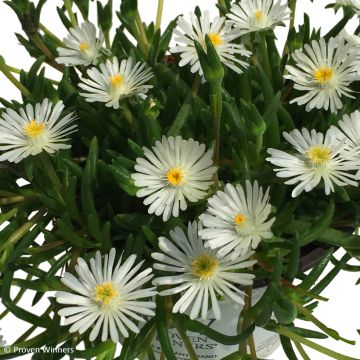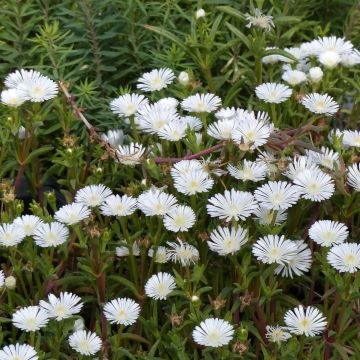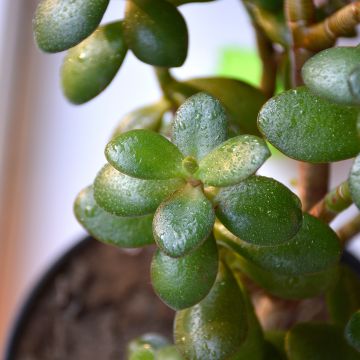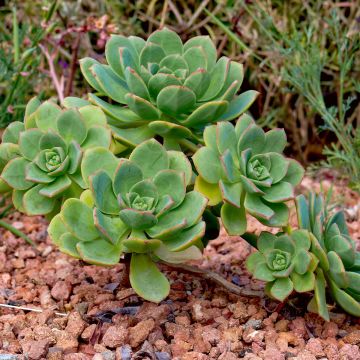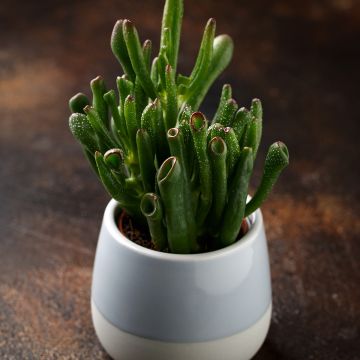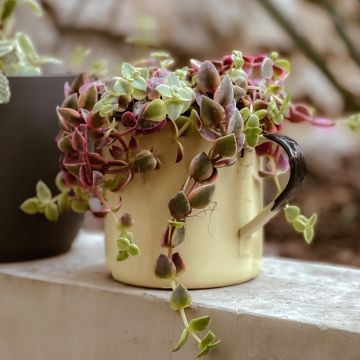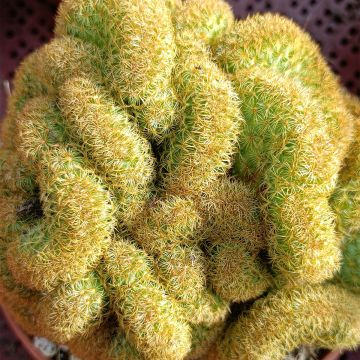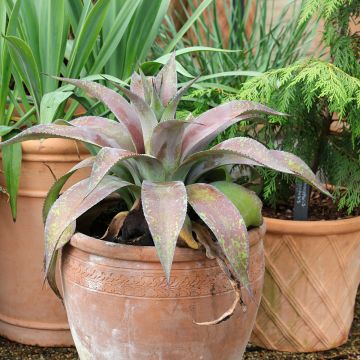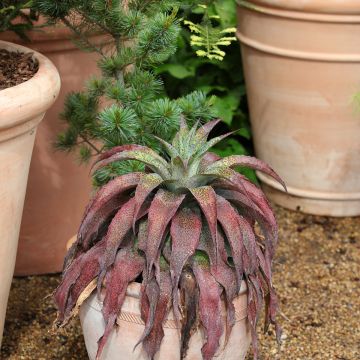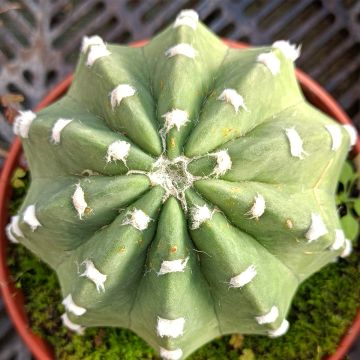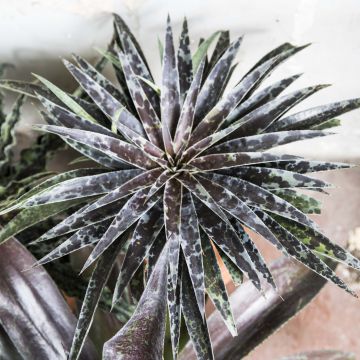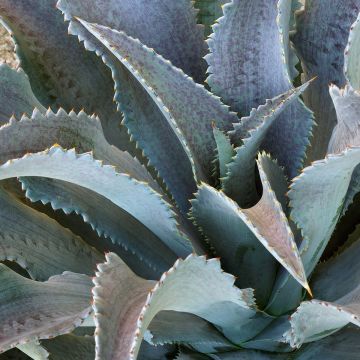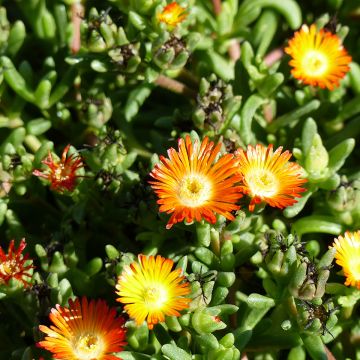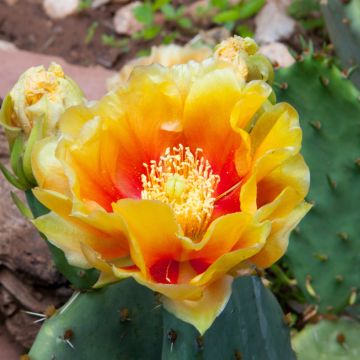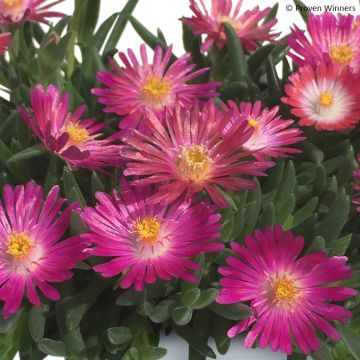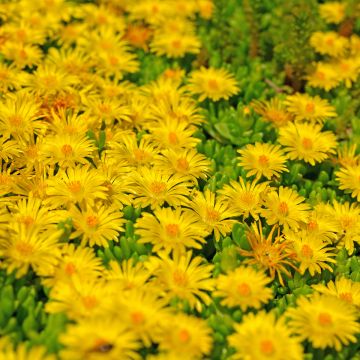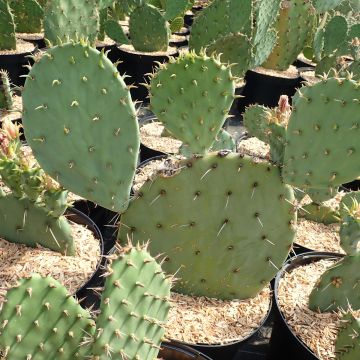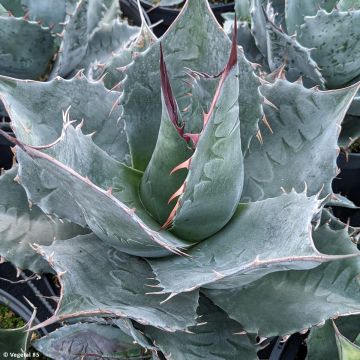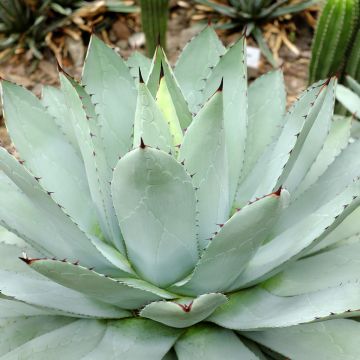

Vatricania guentheri
Vatricania guentheri
Vatricania guentheri
Ecuadorian Organ Pipe
Easy to maintain cactus, pay attention to mealybugs, dry atmospheric conditions, put in winter, young 1 to 2 months old, enhances flowering.
Philippe, 04/12/2020
Why not try an alternative variety in stock?
View all →This plant carries a 12 months recovery warranty
More information
We guarantee the quality of our plants for a full growing cycle, and will replace at our expense any plant that fails to recover under normal climatic and planting conditions.
From €5.90 for pickup delivery and €6.90 for home delivery
Express home delivery from €8.90.
Does this plant fit my garden?
Set up your Plantfit profile →
Description
Vatricania guentheri is a very decorative candle cactus that forms erect branches 10 cm (4in) wide and 2 m (7ft) tall, covered with a prickly down of short, dense, golden hairs. Initially columnar, it then develops a more bushy habit. Over time, curious brownish-red tufts of hair appear, from which several dozen large cream-yellow nocturnal flowers emerge in summer. It is not very hardy so best grown in a pot on a veranda or in a rockery or dry bed in frost-free gardens. Grow it in full sun in fertile, well-drained, sandy or rocky soil.
Native to mountain slopes and valleys in the eastern Andes of Bolivia, at altitudes between 800 and 1300 m (2625 and 4265ft), Vatricania guentheri is well adapted to arid conditions. It belongs to the cactus family and can be found in dry and hot mountain slope forests along with other cacti. In less arid regions, it mixes with more lush, shrubby, and treelike vegetation. It thrives in full sun in fertile, well-drained soils mixed with sand and gravel, and should never be watered; it tolerates cool temperatures better than other cacti. In pots, use a special cactus soil or a mix of potting soil and garden soil. This species can withstand short freezes down to -6°C (21.2°F) once mature.
Vatricania guentheri, also known as Espostoa guentheri, is a perennial plant that begins as a candle cactus when young, initially developing a single pale green branch or "trunk". Its branches are about 10 cm (4in) in diameter with some distinct ribs (up to 27) punctuated by areoles that bear 25 short, thin, dense spines, 5 to 15 mm (0 to 1in) long, forming a beautiful golden down that shines when backlit. Its initially columnar habit becomes bushier with the development of several branches (up to 15) at its base. These branches will then bear curious tufts of very dense intense reddish-brown hair, about 5 cm (2in) long. It grows slowly and reaches 2 m (7ft) in all directions. In summer, under good growing conditions, flower buds form within these hair clusters and open into cream-yellow trumpet-shaped flowers, 8 cm (3in) long and 3 to 5 cm (1 to 2in) wide, at night.
In mild climates, Vatricania guentheri can be planted in a large rockery, a dry slope, or a raised bed enriched with gravel or coarse sand. It can be grown with hardy prickly pears like O. humifusa Millevaches, tall ferula, fairly hardy candle cacti (Cleistocactus strausii, Cylindropuntia imbricata), and ground-covering plants like dwarf artemisias, Rhodanthemum, Ajania pacifia, all of which are equally undemanding. Gardeners in colder regions can grow it in a very large pot on the terrace, carefully choosing the most sheltered spot and ensuring it receives full sun. This tender plant should be overwintered in a very bright, well-ventilated room in more humid and colder regions.
Vatricania guentheri in pictures
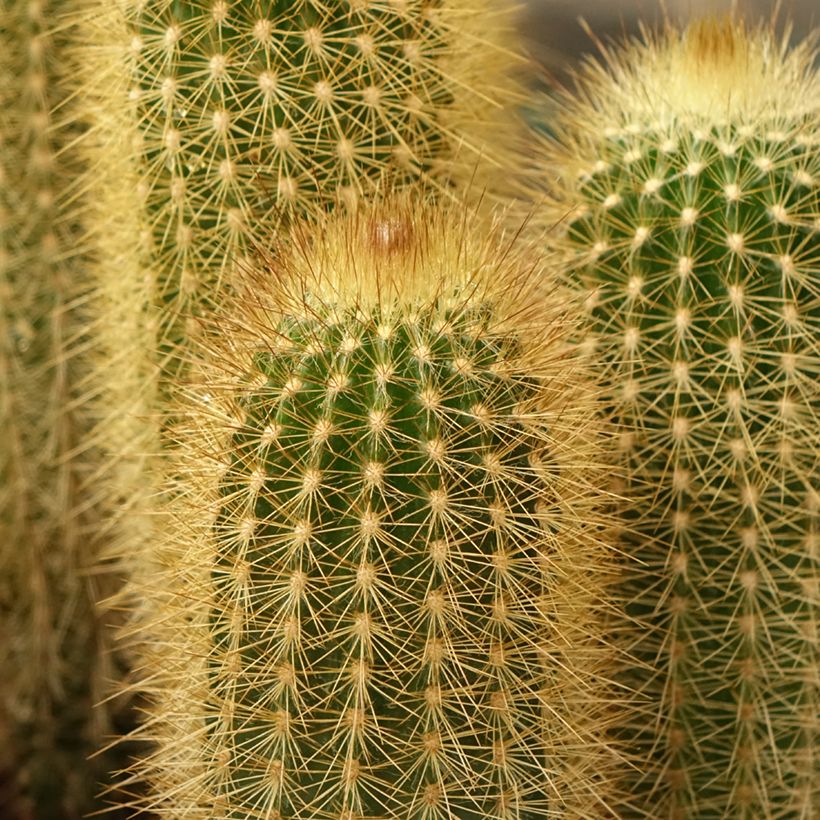

Flowering
Foliage
Plant habit
Botanical data
Vatricania
guentheri
Cactaceae
Ecuadorian Organ Pipe
Andes Mountains
Other Cacti and succulents
Planting and care
Vatricania guentheri likes heat, dryness, and full sun. This species can withstand minimum temperatures of -6 °C but only develops well at temperatures above 12 °C. It can only be planted in the ground only in warm areas, in fertile, well-drained soils mixed with sand and rocks, which should never be watered, though it tolerates moisture better than other cacti. As loves dry or even arid soils in summer you could dig a pit of 50 cm (20in), fill it with a mixture of rocks and light soil, and plant the cactus in it, protecting the collar from stagnant water. The drier the soil, the more it will resist frost, to about -6°C.
In a pot on a terrace, balcony, or veranda, use special cactus soil or a mixture of potting soil and garden soil and only water when the substrate dries during the growing season. You can then store the pot away in winter, in a bright, ventilated place with little or no heating and stop watering. The plant can spend April to October, outdoors.
Make sure to wear protective gloves when handling this plant.
Planting period
Intended location
Care
-
, onOrder confirmed
Reply from on Promesse de fleurs
Haven't found what you were looking for?
Hardiness is the lowest winter temperature a plant can endure without suffering serious damage or even dying. However, hardiness is affected by location (a sheltered area, such as a patio), protection (winter cover) and soil type (hardiness is improved by well-drained soil).

Photo Sharing Terms & Conditions
In order to encourage gardeners to interact and share their experiences, Promesse de fleurs offers various media enabling content to be uploaded onto its Site - in particular via the ‘Photo sharing’ module.
The User agrees to refrain from:
- Posting any content that is illegal, prejudicial, insulting, racist, inciteful to hatred, revisionist, contrary to public decency, that infringes on privacy or on the privacy rights of third parties, in particular the publicity rights of persons and goods, intellectual property rights, or the right to privacy.
- Submitting content on behalf of a third party;
- Impersonate the identity of a third party and/or publish any personal information about a third party;
In general, the User undertakes to refrain from any unethical behaviour.
All Content (in particular text, comments, files, images, photos, videos, creative works, etc.), which may be subject to property or intellectual property rights, image or other private rights, shall remain the property of the User, subject to the limited rights granted by the terms of the licence granted by Promesse de fleurs as stated below. Users are at liberty to publish or not to publish such Content on the Site, notably via the ‘Photo Sharing’ facility, and accept that this Content shall be made public and freely accessible, notably on the Internet.
Users further acknowledge, undertake to have ,and guarantee that they hold all necessary rights and permissions to publish such material on the Site, in particular with regard to the legislation in force pertaining to any privacy, property, intellectual property, image, or contractual rights, or rights of any other nature. By publishing such Content on the Site, Users acknowledge accepting full liability as publishers of the Content within the meaning of the law, and grant Promesse de fleurs, free of charge, an inclusive, worldwide licence for the said Content for the entire duration of its publication, including all reproduction, representation, up/downloading, displaying, performing, transmission, and storage rights.
Users also grant permission for their name to be linked to the Content and accept that this link may not always be made available.
By engaging in posting material, Users consent to their Content becoming automatically accessible on the Internet, in particular on other sites and/or blogs and/or web pages of the Promesse de fleurs site, including in particular social pages and the Promesse de fleurs catalogue.
Users may secure the removal of entrusted content free of charge by issuing a simple request via our contact form.

































